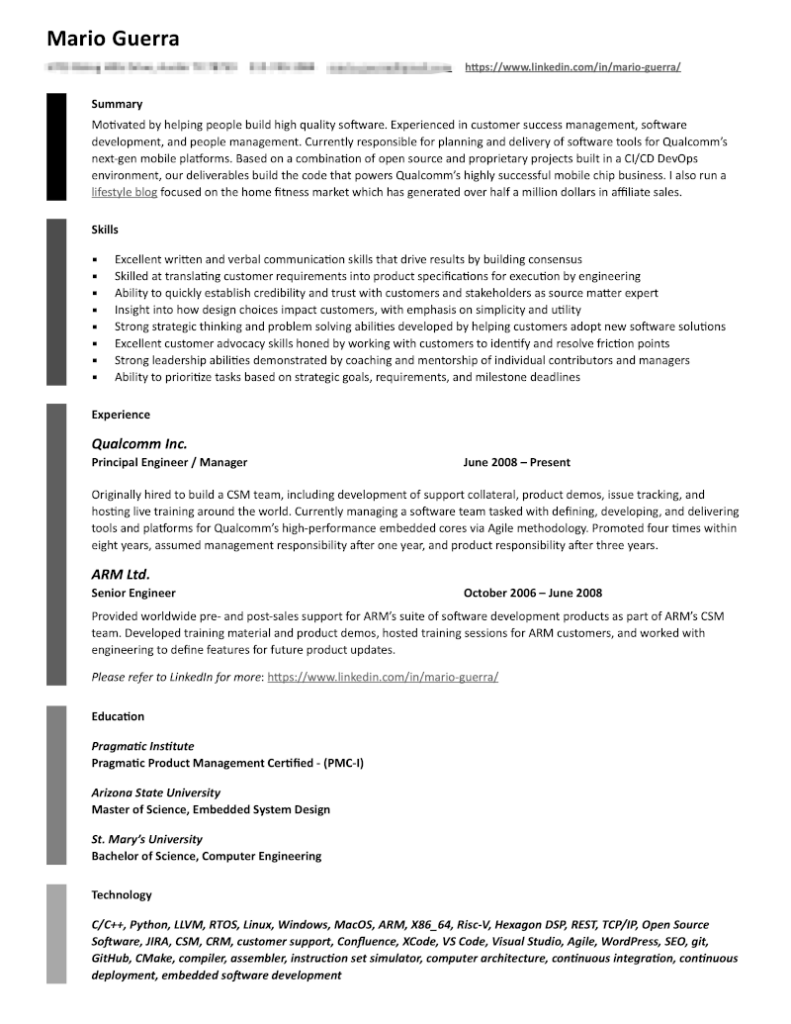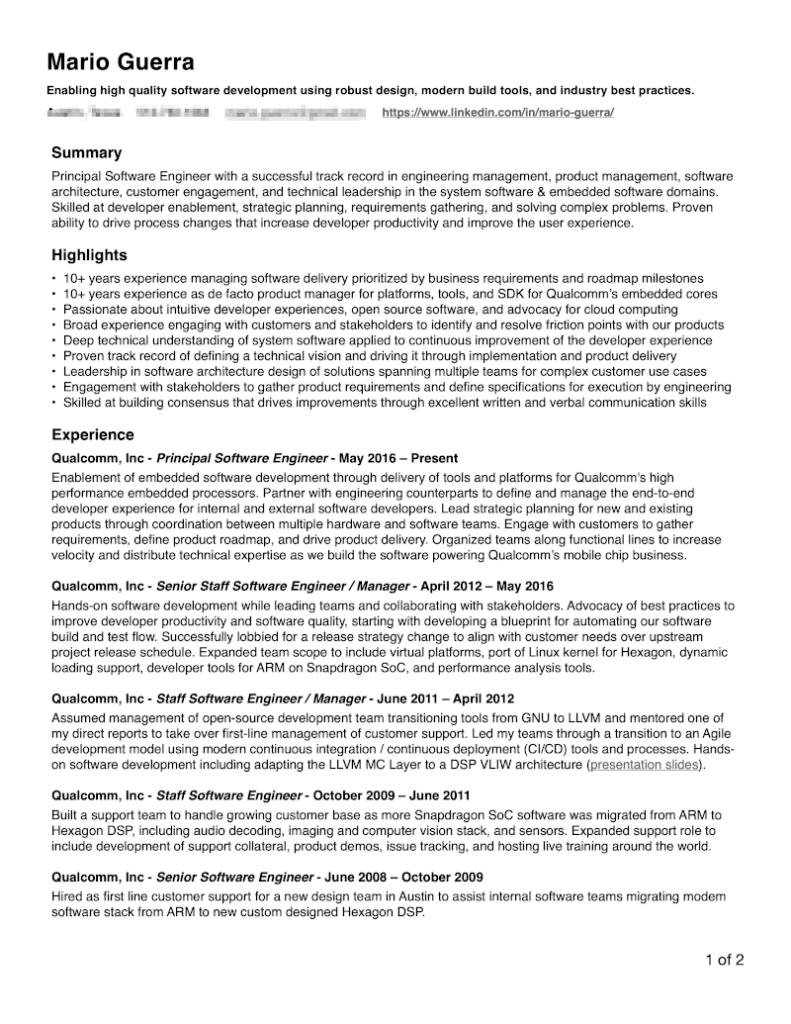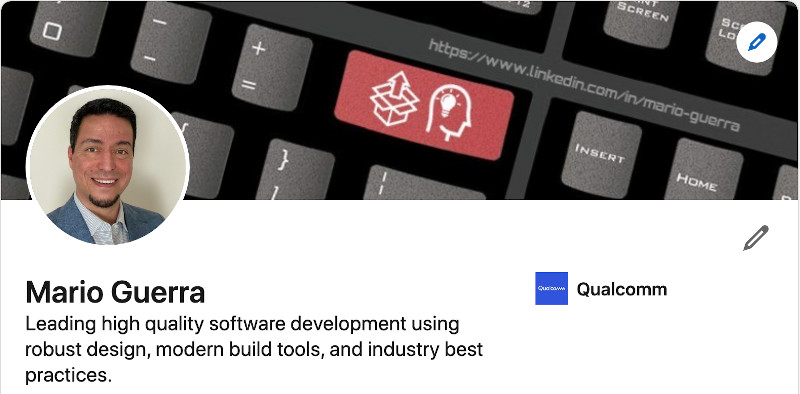Are you interested in landing a remote work job in the 2020’s? So was I. After 20+ years working as a software engineer in a typical office environment, I wanted to make some big changes.
Here’s what I learned from re-entering the job market after 13 years with the same company.
Quick Links
Intro
There are tech jobs aplenty right now and many of them offer a remote work option. However, it took me over seven months to find and get a job I really wanted, but that’s mainly because there are caveats that made my job search more difficult.
First, I was looking to make a transition from software engineering to either a product management or software architect role. This kind of change is not easy to do, especially when moving from one company to another.
Second, I wanted a senior-level opportunity that would allow me to work fully remote, even after the pandemic ends. I had to turn down some opportunities as a result and many companies would not even consider the option. I believe the future of work will require employers to be more flexible to stay competitive, but not all have caught on to that fact yet.
Third, as a systems software engineer (compilers, simulators, and RTOS type stuff), my software skills were out of step with today’s cloud development tools and techniques. This is relevant because nearly every role I applied to required at least some knowledge of cloud computing or cloud architecture best practices.
So here’s what I did that helped me…
Keep track of everything
I applied to 128 different jobs over the course of seven months. Not counting phone screens with company recruiters, eight of those applications resulted in interviews.
Of those eight interviews, four resulted in job offers, one of which I accepted.
I have this information because I tracked every application in a spreadsheet. My spreadsheet included these columns:
- Application date
- Company name
- Company core business
- Position/Title
- Link to job description
- Contacted
- Screened
- Interviewed
- Offer
- Notes
Recording my applications kept me from applying to the same roles and allowed me to track the companies who contacted me. If I was contacted two or three months later as was often the case, I was able to refer back to the job description to refresh my memory on what they were looking for.
When contacted, I used the Contacted/Screened/Interviewed/Offer fields to track how far along I was in the hiring pipeline. I used the Notes column to mark dates for follow up, names of people I spoke with and when, and any other details I thought would be useful.
Optimize your resume for ATS
There’s plenty of content available on how to build a good resume, so I’m not going to rehash that topic. Instead I’m going to focus on what you need to do to avoid having your resume filtered out before anyone ever sees it.
Nearly every tech company I applied to uses an applicant tracking system (ATS). These systems automatically parse the text of your resume to extract the relevant information for insertion into a searchable database. They may also rank your resume in comparison to other applicants that applied for the same role.
The three ATS products I saw used most commonly are Workday, Lever, and Greenhouse.
These applicant tracking systems are great for recruiters but not necessarily good for you and me. Depending on how the system is used, it’s possible your resume may never be seen by the company recruiter or hiring manager.
In fact, I was getting no traction whatsoever until I figured out what was going on.
So how did I get my resume past the applicant tracker? By applying the following three techniques:
- Use a simple text layout
- Use a basic font
- Maximize keyword density
- Restating the job description
Simple text layout
ATS programs are sophisticated, but they still have trouble properly parsing non-standard document elements like columns, tables, and decoration.
Unfortunately my original resume incorporated all three. I removed all the fancy stuff and stuck with simple text and bullet points.
Basic font
I originally used Calibri as the base font for my resume because I like the way it looks. Unfortunately I found that several applicant tracking systems had problems parsing my resume text correctly.
After manually correcting the same translation problems for the umpteenth time I wanted to know why. I learned through Googling that some tracking systems have trouble parsing non-standard fonts.
Even though Calibri is a widely used font, it apparently isn’t widely used enough for some ATS software. I changed my font to Helvetica and never had to correct another text parsing mistake.
Keyword density
Keyword density is crucial for maximizing your chances of appearing in searches done by corporate recruiters and hiring managers in an ATS.
My original resume was optimized to fit on one page, giving me very little space to cover my thirteen years at Qualcomm. I can’t say for sure, but I believe my resume rarely got seen because I didn’t cover all the various projects and technologies I’ve worked on over the last several years.
I wasn’t getting much traction on my early applications so I’m pretty sure I’m right though.
I decided to ditch the short format resume and elaborate on my work experience. I split out my time at Qualcomm into sections covering time between promotions as if each were a separate job. This approach allowed me to expand on the work I did while increasing keyword density.
Expanding on my experience pushed my resume from one page to two, but I think the days of the one page resume died with the rise of applicant tracking systems.
Restate the job description
I made a point of carefully reading each job description and adding relevant phrases that matched my experience to the ‘Highlights’ section of my resume. For example, the job description for the Azure SDK PM role I accepted included the following phrase:
Passionate about intuitive developer experiences, open source software, and advocacy for cloud computing.
So, I made sure my resume included that exact phrase because I am passionate about these things. Cloud computing is a stretch because I don’t have prior experience in this domain, but it does happes to be an area I’m very interested in.
Including phrases from the job description in my resume dramatically increased my application response rate.
I want to stress that maximizing keyword density and restating the job description does not mean padding your resume with fluff. You should be able to back up everything you put in your resume with actual experience.
This approach also serves as a litmus test – if there’s nothing in the job description you can legitimately add to your highlights, are you really applying for the right role?
My resume before and after
resume when I started my job search 👎

resume that got me the job I wanted 👍

I also kept copies of every variation of my resume in separate folders named after each company I applied to. I needed to do this since I was cherry picking relevant phrases out of each job description to add to my resume.
Keeping every variation of my resume saved me time when applying to similar jobs because I could reuse some of the same text.
Build your personal brand
I have a friend who is a high-level executive at a well known consumer products company. One of the best pieces of advice he gave me was to build my personal brand.
What he meant was, take stock of my skills, interests, experience, and track record to figure out what it is I’m really good at and what I’m passionate about.
Putting it another way, what is the unique value proposition I offer?
This is easier said than done, but it was huge for me.
Define your skillset
Defining my skills and interests really helped me clarify what I wanted out of the next 20 years of my career. As a result it became clear to me that the path I was on was not what I wanted.
I also realized I had been applying for jobs I didn’t really want. Once I was able to clearly lay out my interests and goals, the opportunities began to look different. I was able to clearly see which ones were a good fit and which ones weren’t.
There’s lots of great material online about building your own brand, but these questions will get you started:
- What are you really good at?
- Who benefits the most from the things you’re really good at?
- How do you apply your skills to solving problems for the benefit of others?
- What makes you different from others who are also good at the same things?
When you have answers to these questions, develop a personal brand statement that sums up your value proposition. Here’s what I came up with after defining my brand:
Leading high quality software development using robust design, modern build tools, and industry best practices.
I placed this statement at the top of my resume and my LinkedIn profile so anyone reading either would clearly understand what I bring to the table.
Create your elevator pitch
Create an elevator pitch about who you are that you can deliver in under two minutes. You’re going to need this because the first question you’ll likely be asked in almost any interview is, “Tell me about yourself?”
If you need some help, this article is a great starting point.
Here’s part of my pitch:
I’m very good at reducing friction in the software development process. I remove friction by helping people make the best use of existing products, defining and implementing process improvements, and identifying new product opportunities. I love to learn, solve problems, and help others. I’m at my very best when I can leverage my first two loves in service of the third.
You only get one shot to make a first impression, so it’s really important to have a crisp and focused answer ready to go about who you are and what you bring to the table.
Which leads me to my next tip…
Be prepared
Once you’ve made it to an interview, you’ve got one chance to show them your value. Don’t waste it by going in cold.
Have good answers
My executive friend gave me another good piece of advice – take the time to think through and write out answers to the most common interview questions.
The same types of questions come up in nearly every interview…
Tell me about yourself? What’s your biggest weakness? What work accomplishment are you most proud of? Tell me about a time you disagreed with a decision?
You can find a great list of typical interview questions on LinkedIn.
Take time to write out answers for every common question and practice speaking the answers out loud till you have them memorized. When asked, you’ll have an answer ready and you’ll come across as professional, composed, and self-aware.
As a hiring manager, I’ve asked many of these questions to potential hires. I’ve been astounded by how unprepared many people are to answer them and impressed with the people who provide a clear and crisp answer.
Ask good questions
A good interviewer will always leave time for you to ask questions. Take full advantage of this time.
Here’s a great list of questions that cover a broad range of topics. Pick a few that you can ask each interviewer so you get a good sense of the people you’ll be working with and the culture you’ll be working in.
At the end of each interview I suggest asking this question:
What skills or experience do you think I’m missing that would make me a better fit for this role?
I like this question because it offers insight into the interviewer’s impression of you. Plus, if you do happen to have relevant skills or experience that weren’t covered in your interview, you have a chance to fill in the gap.
Do your research
Before interviewing, take time to do as much research on the company as you can. Learn about the core products. Watch presentations. Read available documents. Try out the software if you can. The more you can do to educate yourself, the stronger you’ll come across in an interview.
In my case, prior to my interview with Microsoft I set up a free Azure account and downloaded the Azure SDKs for Python and JavaScript. I installed VSCode and .NET Core runtime. I worked through as many Azure tutorials as I could find. I chatted with Microsoft’s customer support.
As a result, I came to the interview with a very good understanding of what the friction points were with the products and I was able to speak fluently about potential solutions.
I don’t have a background in product management, but I have a solid grasp of what it takes to improve the software development experience from a long career building and supporting software development tools. I was successfully able to leverage my experience and apply it to a new domain because I took the time to do my research.
Leverage LinkedIn
LinkedIn hosts the most job postings of any other job board I found and the quality of job postings was far higher. I relied heavily on LinkedIn for my job search and I found my Azure program management job through LinkedIn.
I used my LinkedIn profile to serve as an online copy of my resume that hiring managers and interviewers could quickly refer to. I recommend you do the same. Keep your profile up to date. Give it the same attention you give your resume. Add a good quality picture of yourself.
I would also recommend using the image banner area for something eye catching. You only get one chance to make a first impression, so stand out as much as possible without going overboard.
Here’s what my banner looked like during my job search:

Note the visual elements in the banner. I specifically created an image that requires focus to decipher the icons and what they mean in the context of a keyboard. My intent was to create a little bit of mental stickiness that would help someone remember me.
Did it work? I can’t say for sure, but it certainly didn’t hurt!
Be adaptable
The 2020’s have started off with a bang. The job market is shifting rapidly and you need to shift with it. I was constantly revising my approach as I went through this process and learned new things, and you should expect to do the same.
I hope these techniques and tips are useful. If nothing else sticks remember this – if you are consistently not getting any response from companies you’ve applied to, re-evaluate what you’re doing and try something different.
Good luck!
